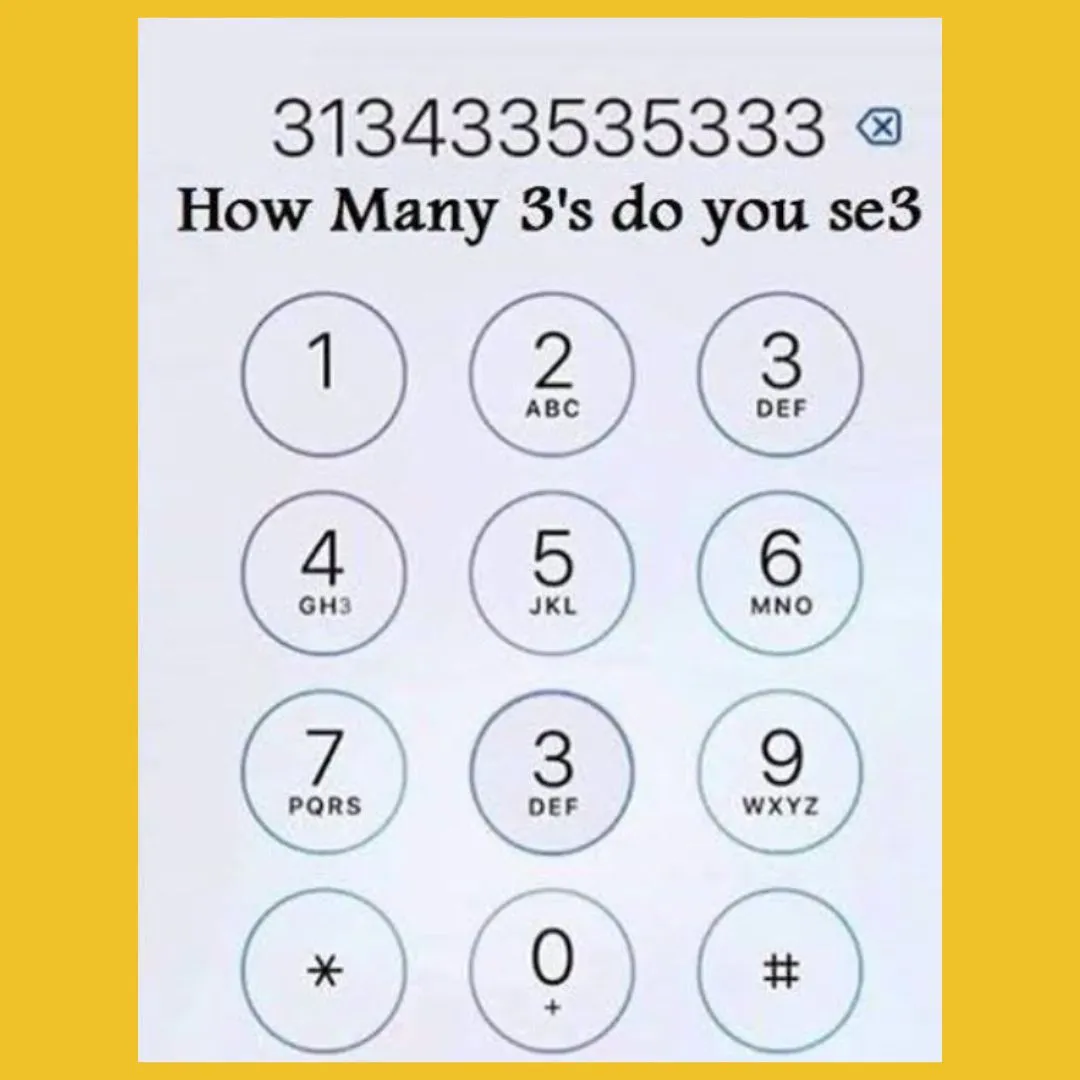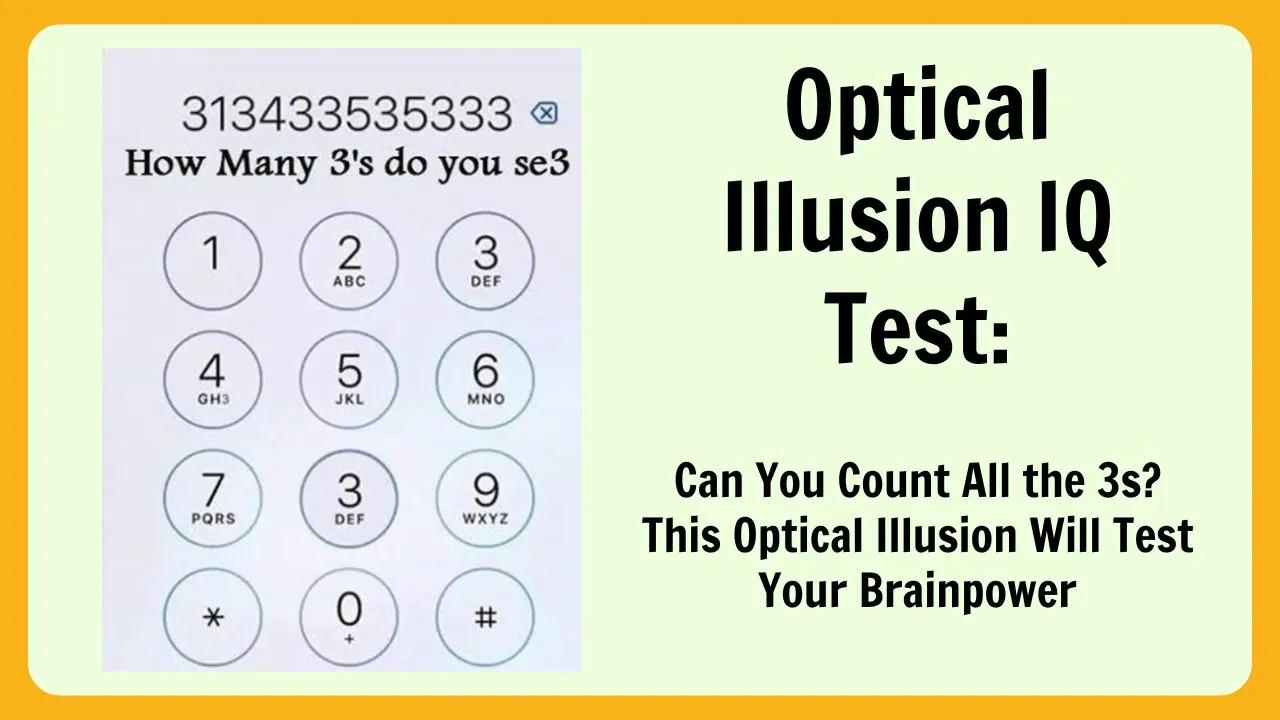People of all ages have long been fascinated and entertained by optical illusions and brainteasers. “Emmygold” presented a really interesting problem that has recently received a lot of attention on social media, particularly on X (previously known as Twitter). Users are tasked with finding and counting each instance of the number three in an image in this fairly straightforward exercise. It seems to be a simple observation test at first look. But it’s the details that reveal the real complexity, which is what makes it so fascinating.
The first number in the puzzle is 31343353533, which is seen prominently at the top of the picture. A picture of a typical phone keypad—the kind seen on cell phones and vintage landlines—is shown directly beneath this string of numbers. In addition to being aesthetically pleasing, the keypad and number string are positioned to subtly affect how the observer perceives and understands the numbers.
When told to count all the threes, most people will automatically glance at the number sequence and start counting up each digit that appears as a three. The number 3 appears six times in the sequence “31343353533.” That should be easy enough, right? There is more to the brain teaser than meets the eye, though, and this is where it truly lives up to its moniker.

A second layer to the problem is added with the addition of the phone keypad. Each number on a conventional keypad is paired with a set of letters; for instance, the letters D, E, and F are all connected to the number 3. This could cause more misunderstandings or give the impression that the number three can be represented symbolically, numerically, and visually. Depending on the design depicted in the picture, the keypad may also have extra 3s in the form of button labels.
The main factor that contributes to the teaser’s effectiveness is this deception. It assesses a person’s capacity for both observation and cognitive trap avoidance. Many people who attempt the puzzle are so preoccupied with the numerical sequence that they neglect to look closely at the full image. It’s possible for some people to overthink the puzzle and envision subliminal or hidden 3s that don’t exist.
The social media context in which this riddle is shared adds even more allure. Users publish their answers quickly on sites like X, frequently with differing outcomes. When someone observes a range of answers, such as 5, 6, 7, or more, they start to question their own observations and return to the puzzle from a different angle, which further confuses the experience.
This brain teaser essentially serves as a reminder of how readily presentation and context can deceive the human brain. It pushes us to slow down, focus more intently on the details, and challenge our preconceptions. The experience itself is an entertaining and enlightening test of your visual perception and reasoning skills, regardless of whether you get the right amount of threes on your first attempt. And to those who are able to correctly identify each of the three? They are undoubtedly deserving of the moniker “brainpower king.”

